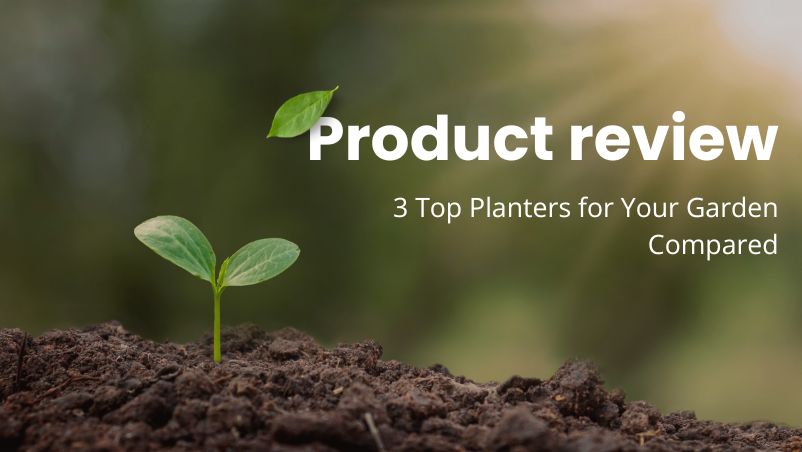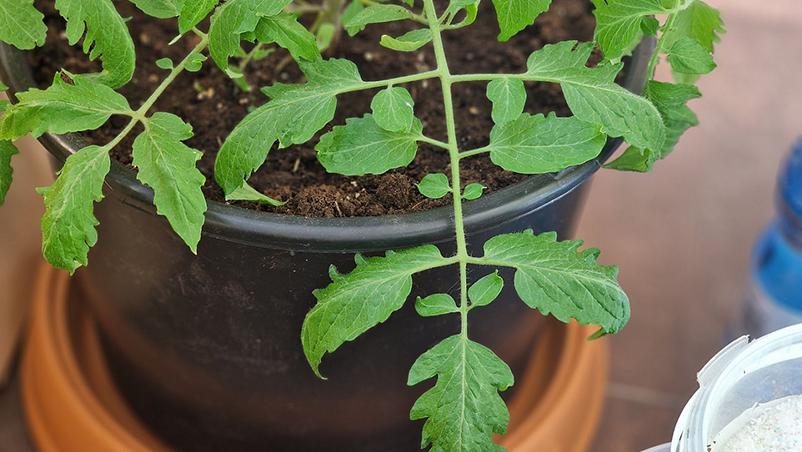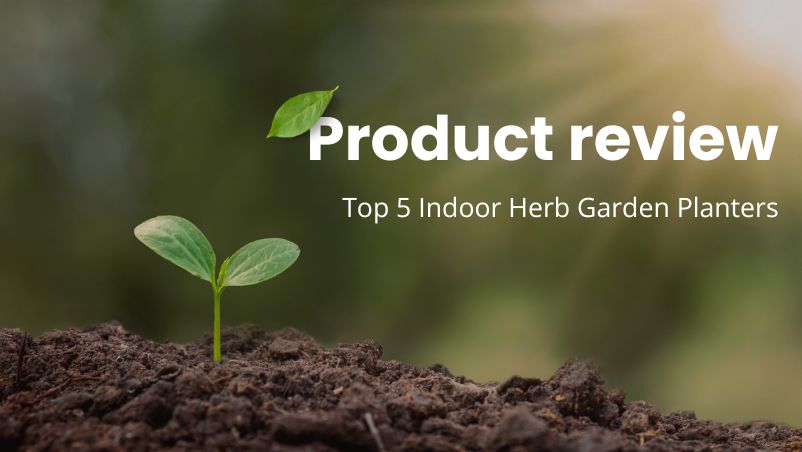
Getting started with growing tomatoes at home goes beyond adding some greenery to your living area or savoring the flavor of freshly harvested fruits. It’s, about rekindling a connection with nature grasping the flow of life and experiencing the satisfaction of nurturing plants from seed to harvest. With years spent exploring, studying and sharing knowledge on gardening I’ve learned to value the happiness and sense of achievement that cultivating tomatoes, within my home brings.
Understanding Tomato Plant Requirements
To ensure thriving tomato plants it is essential to meet their specific requirements as with any other living organism. Despite common belief that tomatoes crave abundant sunlight they actually only require 6 to 8 hours of light per day.
If your home lacks sufficient natural sunlight. Successful indoor cultivation can be achieved through the use of grow lights. Another key aspect of tomato care lies in watering; however, over- or under watering may lead to various issues such as root rot or wilting. The trick lies in maintaining evenly moist soil by adjusting watering frequency accordingly since indoor environments typically lack humidity compared to outdoors. Nonetheless its always safer to underestimate rather than overestimate water needs since excessive moisture poses greater challenges for plant recovery.
Lastly yet crucially important: tomato plants demand rich and well draining soil due to their nature as heavy feeders rapidly depleting soil nutrients. By utilizing high quality potting mix and implementing regular fertilization practices you supply your tomatoes with necessary nutrients for their growth and fruit production.
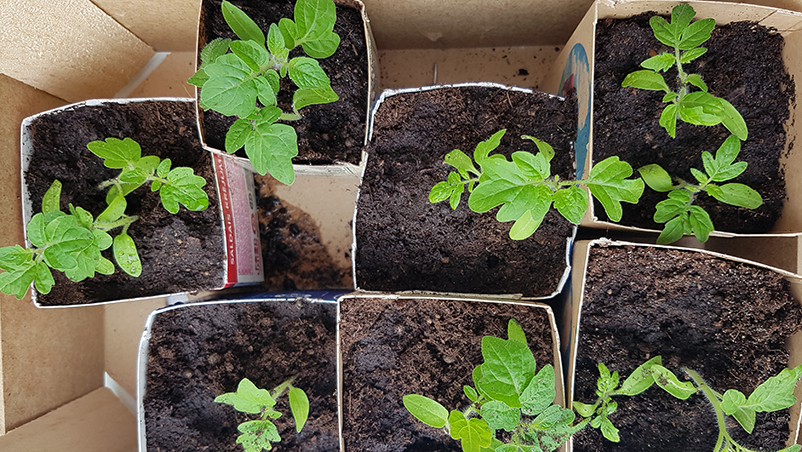
Choosing the Right Tomato Variety for Indoor Cultivation
There are many different varieties of tomatoes, but not all of them will be suitable for indoor gardening. The best options for cultivation are typically bushy varieties that stay relatively short. Its often recommended to go with dwarf or determinate tomato types as they take up space compared to the indeterminate varieties.
Cherry and grape tomatoes are choices for gardening because they’re small grow quickly and produce lots of fruit. Their smaller size means they ripen faster allowing you to enjoy your harvest sooner no matter which variety you choose.
It’s crucial to make sure the plants have room to grow both for their height and horizontally, for their roots. To promote growth of tomatoes using a large and deep container is highly advised.
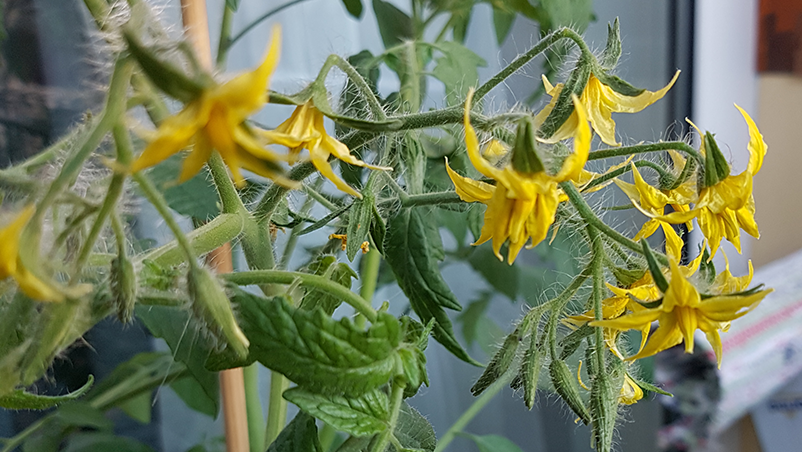
A Step-by-step Indoor Tomatoes Growing
Embarking on growing tomatoes indoors may initially give rise to feelings of trepidation; however, let me assure you that once you grasp the necessary steps involved, it becomes quite feasible indeed! Allow me to expound upon a simple guide that will serve as an excellent launching pad for your endeavor.
1. Choose your seeds or seedlings
Firstly, one must skillfully select either seeds or seedlings, with a leaning towards dwarf or determinate tomato varieties for indoor cultivation. In the case of the former preference, these seeds should be gently placed in a well-balanced concoction engineered specifically for this purpose. One must ensure that the environment surrounding these precious seeds remains saturated with copious moisture and warmth until they commence germination. Alternatively, nursery-bought young plants offer an alternative option that facilitates one’s indoor tomato-growing aspirations.
When selecting the fine seed choice, one must be diligent in orchestrating their placement within soil that is moistened as per requirements to promote favorable germination outcomes.
2. Transplant the seedlings
Once those fleeting yet crucial first true leaves manifest on your seedlings, it signals the ideal juncture to undertake transplantation activities. Gain mastery over this process by encapsulating wisdom: plant them firmly into their final pots and bury their stems beyond initial leaves so as to invigorate robust root development.
3. Provide light and warmth
Illumination and heat emanate from sun-drenched spaces or grow lights are pivotal components of successful indoor tomato growth aesthetics. Utilize this knowledge and assign your plants a prime spot where they shall flourish. Strictly maintain temperatures at a steady level hovering between 70-75°F (24°C) for optimal yield achievements.
4. Water and feed regularly
Sparing no expense in omitting water & feeding tasks constitutes an integral ingredient within your nurturing repertoire. Reserving hydration practices solely for instances when one inch of surface soil relinquishes its dewiness feels imperative. Responsibly catering to nutritional needs, apply balanced liquid fertilizers every fortnight throughout the process.
5. Stake or cage as needed
Unpredictable predicaments may arise during growth phases forcing you to provide additional support for certain strains of tomato plants. Being conscientious enough during earlier stages while utilizing provisional stakes or cages prevents unwarranted damage occuring upon fledgling root systems.

Care & Maintenance of Indoor Tomato Plants
Caring for indoor tomato plants is quite similar to caring for them outdoors. But there are a few additional things to consider.
Firstly, indoor plants are more susceptible to overwatering due to the decreased evaporation indoors. To prevent this ensure that the pot has proper drainage and that the soil drains well.
Only water when the top inch of soil feels dry to the touch. Secondly indoor tomatoes require regular feeding in order to replenish the nutrients they remove from the soil. A balanced liquid fertilizer should suffice.
Apply it every 2 to 3 weeks or as instructed on the package. Lastly indoor plants lack the assistance of wind and insects in pollination.
Therefore you will need to manually conduct this process by gently shaking the plants or using a small paintbrush to transfer pollen from male flowers to female flowers.
Solving Typical Issues When Growing Tomatoes Indoors
Despite your commendable efforts complications may unexpectedly arise when growing tomatoes indoors.
With comprehensive knowledge and a discerning eye. The majority of issues can readily be resolved. One prominent issue entails the occurrence of yellowing leaves.
Serving as an ominous sign indicative of overwatering, underwatering, or nutrient deficiencies. To ameliorate this matter meticulously assess soil moisture levels and adapt watering practices accordingly. Supplementing the soil with slow release fertilizer proves beneficial.
Another challenge worth mentioning concerns plants that exhibit elongated stems (commonly referred to as leggy). This undesired outcome typically arises due to inadequate light exposure. Contemplate transferring these plants to more illuminated areas or increasing the intensity of grow lights should you observe towering plants with substantial spaces between leaves.
Ultimately pests remain a formidable adversary even within indoor settings. Maintain utmost vigilance for intruders like aphids and spider mites while effectively dealing with them either manually or utilizing gentle insecticidal soap.
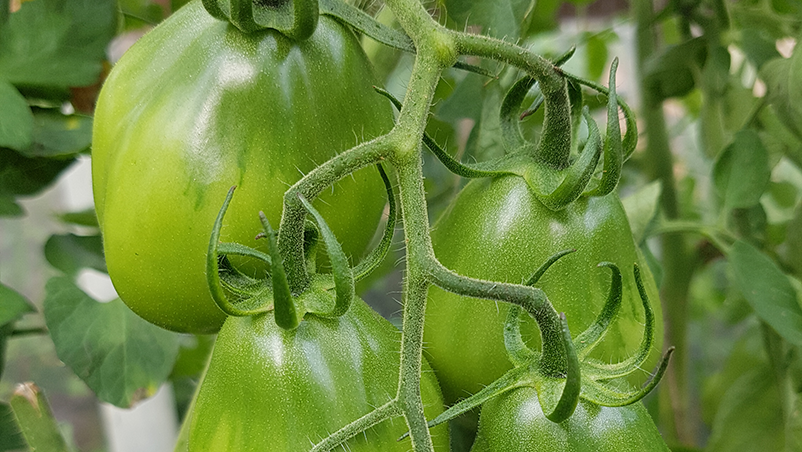
Harvesting and Using Your Indoor Tomatoes
The most satisfying part of indoor gardening is when you gather your tomatoes. You’ll know its time to harvest them when they are fully colored and slightly soft to the touch. To remove the fruit from the vine gently twist it until it snaps off.
There are many uses for freshly harvested tomatoes, including salads and sauces. Additionally you can preserve them by canning or freezing for future use. However, the ultimate way to savor your homegrown tomatoes is to enjoy them straight from the vine.
Theres’ truly nothing like the flavor of a perfectly ripe tomato that you’ve nurtured yourself. Don’t forget to save some seeds for your next planting, since tomatoes self pollinate.
These seeds will grow into plants identical to their parent plant. This means you can continue cultivating your preferred varieties year after year.
Benefits of Growing Tomatoes Indoors
The practice of growing tomatoes indoors boasts several advantageous aspects. Primarily, it allows individuals to enjoy fresh organic produce throughout the entire year. This approach not only aids in money saving endeavors when it comes to groceries but also ensures consistent access to nutritious food items without interruption.
Undertaking indoor gardening offers an avenue for incorporating aspects of nature into ones’ household spaces. It can be considered both a therapeutic engagement as well as a rewarding experience witnessing firsthand the growth and thriving nature of living organisms. Additionally on a practical level it is worth mentioning that indoor plants play an active role in purifying air quality which contributes heavily towards creating serene surroundings. Finally it should be highlighted that engaging in indoor gardening stands as a sustainable choice due to lower water consumption when compared to outdoor alternatives. The additional benefits include reduced reliance on transportation and diminished packaging needs typically associated with store purchased produce.
Essential Tools for Growing Tomatoes Indoors
To kick off your gardening journey it’s essential to gather a key tools. You’ll need pots, with drainage holes, quality potting soil, a watering can and liquid fertilizer. If you’re planning to grow plants from seeds make sure to have a seed tray and seed starting mix on hand.
For plant lighting you can choose between placing them on a windowsill or investing in grow lights. There are types and sizes of grow lights so pick one that suits your space and budget.
Remember that tomatoes typically need 6 to 8 hours of light daily. Be sure your chosen lighting setup meets this requirement.
Lastly it’s important to have stakes or cages, for supporting your tomato plants as they grow. You can easily get these items at a garden center or online.
Have an active gardening.day!
